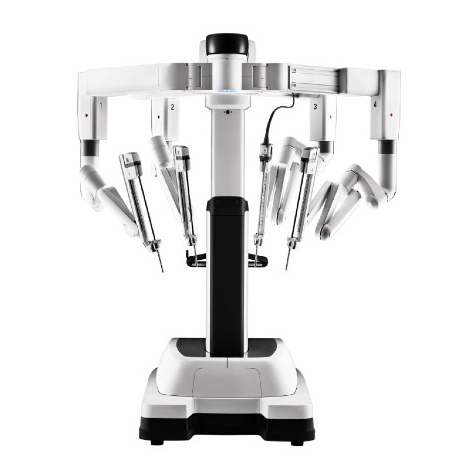Transoral robotic surgery

Introduction
We currently use many tools (for example, metal frames and scopes, microscopes, laser, coblation etc.) to provide minimal, scar free access to address different pathologies in the mouth and throat. These all have limitations. In the last decade, robotic assistance has been increasingly used to overcome these limitations. Transoral (through the mouth) robotic procedures are performed widely in the USA, throughout Europe and in some UK centres of excellence, such as mine. It is a safe procedure, undertaken by a small group of highly trained dedicated surgeons, anaesthetists and theatre scrub staff.
How does it work?
- For the safe and complete excision of tumours that arise in the tonsil, the throat, back of tongue and voice box, without the need for external incisions or radical operations such as splitting the jaw bone for access.
- It is a key procedure in the management of my patients who suffer with obstructive sleep apnoea
Why should you have a robotic procedure?
It is vitally important that the tissue that is causing the problem in your throat is correctly identified, biopsied or completely excised with minimal to no injury to the surrounding healthy tissue. There are numerous important nerves and vessels in close vicinity that must be preserved if possible
A huge advantage of a robotic assisted transoral operation is that it provides a magnified view of areas in the throat that are simply not visible with standard equipment; the tongue base for example is a difficult area to access.
The robotic arms and fingers are extremely accurate in translating hand motion, with versatility to grasp and dissect in multiple angles and planes, whilst eliminating hand tremor. This aids in the precise removal of the culprit tissue, easy identification and early control of blood vessels with sparing of nearby vital structures and healthy tissue.
Accurate biopsies and complete surgical excision as necessary can be undertaken safely
Precise, minimally invasive surgery should ensure less pain, less blood loss and quicker recovery.
What are the risks?
When performed by a highly trained, experienced team, there are no additional risks over and above the standard non-robotic procedure.
I will of course have a detailed discussion about the exact procedure I am offering and discuss in detail any risks specific to the operation.
In general, common to all these operations, the lips and teeth will need to be held open by a metal frame. Rarely a tooth may be injured by the instruments, especially if it was already loose or decayed.
There is a small risk of troublesome bleeding that may warrant a further operation. This risk is less than 1 in 100 patients. You can however expect some blood-tinged saliva that usually settles over the next few days.
The risk of infection is also low, but depending on the extent of surgery and indeed the condition that is being treated, I am likely to commence you on a course of antibiotics. If so, it is important to complete the entire course.
You may be required to stay overnight in the hospital.
The procedure can be painful. You will be encouraged to take regular pain medication and throat spray/ gargles for at least a week.
You will be encouraged to eat your normal diet upon discharge, although you should avoid very hot, spicy food and acidic drinks such as fizzy drinks, orange or tomato juice for 2 weeks to reduce the chance of bleeding, swelling and pain.
